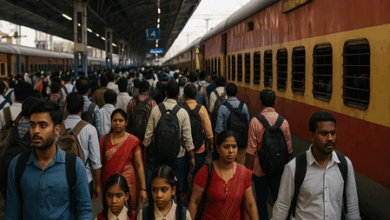
New Delhi : The government does not plan to print more currency to tide over the economic slowdown brought about by the COVID-19 pandemic, Union Finance Minister Nirmala Sitharaman told the Lok Sabha on July 26.
“The fundamentals of the economy remain strong as gradual scaling back of lockdowns, along with the astute support of the Aatmanirbhar Bharat Mission has placed the economy firmly on the path of recovery from the second half of FY 2020-21,” Sitharaman said in a reply to a question by Lok Sabha member Mala Roy on the state of the economy during the coronavirus pandemic.
When asked “whether there is any plan to print currency to tide over the crisis”, the finance minister, in her written statement, replied “no”.
There have been calls from multiple quarters that the Reserve Bank of India (RBI) should print more money and the government should use that to distribute it among the people and small businesses most affected by the economic hardships caused by the pandemic, either in the form of direct income support or employment support.
The finance ministry believes that a direct income support scheme will lead to more savings rather than more consumption, and the only way to spur the latter is through the path laid out in the 2021-22 Union Budget, of higher public capital expenditure into infrastructure projects with large multiplier effect, which will create more jobs.
Replying to another question in Lok Sabha, Sitharaman said that the impact of the COVID-19 second wave is expected to be muted given localised containment measures and rapid upscaling of the vaccination drive.
She said that the Budget had estimated India’s nominal Gross Domestic Product (GDP) growth at 14.4 percent in FY 2021-22 while the RBI, in its latest Monetary Policy Committee (MPC) resolution of June 4, 2021, cut India’s real GDP to grow at 9.5 percent in FY 2021-22 after accounting for the impact of the second wave as compared to its earlier projection of 10.5 percent.
Sitharaman said that the Centre has undertaken a ‘judicious mix’ of both supply side and demand side measures in a calibrated manner to balance growth-inflation dynamics and support long lasting growth.
“As per RBI, the inflationary pressures are expected to be mitigated by a normal south-west monsoon, comfortable buffer stocks, recent supply side interventions in pulses and oil seeds market, declining caseload of COVID-19 and gradual easing of movement restriction across states,” she said.






